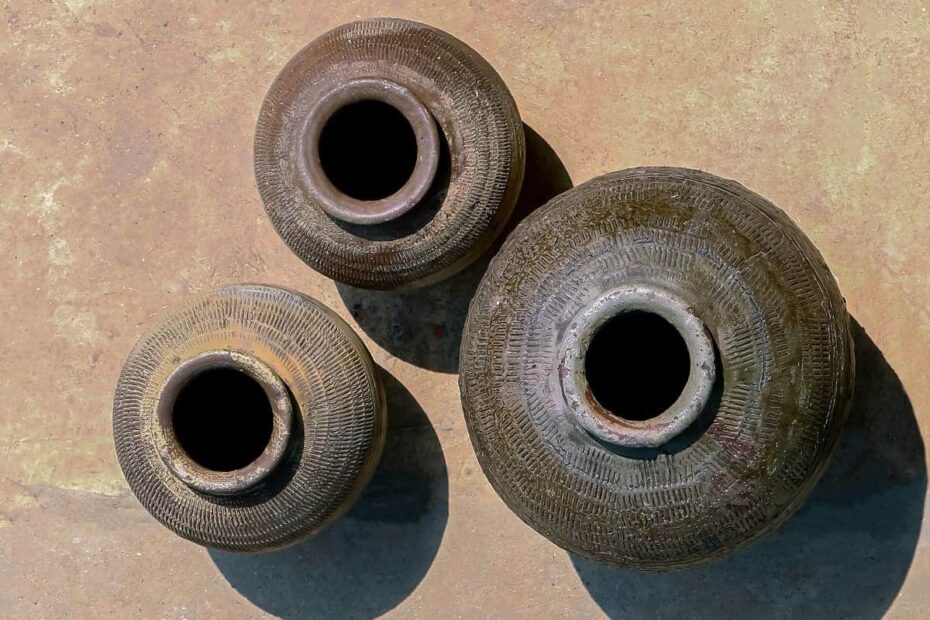Discovering a Passion: My First Encounter with Stoneware
The first time I held an authentic antique stoneware crock, I knew my life would never be the same. It wasn‘t just a ceramic vessel—it was a portal to another time, a tangible connection to generations of craftspeople who transformed humble clay into functional art.
I remember the moment vividly. An old farmhouse auction in rural Pennsylvania, dust motes dancing in sunlight, and there it was—a salt-glazed stoneware crock from the mid-19th century. Its weathered surface told stories of countless harvest seasons, preserving vegetables and fruits for families who depended on its durability.
The Geological Symphony of Stoneware
Understanding stoneware begins with understanding earth itself. These remarkable vessels emerge from specific clay deposits, each with unique mineral compositions that define their character. The clay from the Hudson Valley, rich with silica and iron, produces a distinctly different stoneware compared to the clay beds of Ohio or Kentucky.
When you hold a genuine antique stoneware crock, you‘re not just holding a container—you‘re holding a geological narrative millions of years in the making. The clay‘s journey from riverbed to kiln represents a transformative process that turns raw earth into something extraordinary.
The Craftsman‘s Touch: Beyond Manufacturing
Stoneware production was never merely about creating storage containers. It was an intricate dance between human skill and natural materials. Each crock represented a craftsman‘s intimate understanding of clay‘s temperament, firing techniques, and glazing methods.
In the early 19th century, potters were more than manufacturers—they were community artisans. A local potter knew precisely how to select clay, prepare it, throw it on a wheel, and fire it to create vessels that would serve families for generations. These weren‘t mass-produced items but carefully crafted objects imbued with individual character.
Regional Signatures: A Geographical Tapestry
Every region in America developed its unique stoneware tradition. The salt-glazed crocks of New York‘s Finger Lakes region differed dramatically from the alkaline-glazed pottery of the Southern states. These differences weren‘t just aesthetic—they reflected local resources, cultural influences, and generational knowledge passed down through families.
The Economic and Social Significance
Before refrigeration, stoneware crocks were essential to survival. They preserved meat, pickled vegetables, stored grains, and maintained food supplies through harsh winters. A well-crafted crock wasn‘t a luxury—it was a lifeline.
Families would often have multiple crocks of varying sizes, each serving a specific purpose. The largest might store salted pork, while smaller ones would contain preserves or fermented foods. These vessels were so valuable that they were often mentioned in wills and passed down through generations.
Preservation Techniques: An Evolving Art
The art of using stoneware for food preservation was complex. Salt-glazing, a technique where salt was thrown into the kiln during firing, created a unique, slightly textured surface that helped seal and protect stored foods. This wasn‘t just craftsmanship—it was a sophisticated preservation technology.
The Collector‘s Perspective: More Than Just Artifacts
For serious collectors like myself, each stoneware crock represents a complex narrative. We‘re not just acquiring objects; we‘re preserving cultural memory. Every crack, every glaze variation, every maker‘s mark tells a story waiting to be understood.
Valuation: Beyond Monetary Worth
While some rare crocks can fetch tens of thousands of dollars, true value transcends price. A crock‘s worth is determined by its condition, rarity, provenance, and the story it carries. A seemingly simple vessel can become a museum-worthy artifact when its history is fully understood.
Modern Relevance in a Digital Age
In our current era of mass production and disposable goods, antique stoneware crocks represent something profoundly different. They embody craftsmanship, durability, and a connection to our agricultural past that feels increasingly distant.
Young collectors are rediscovering these artifacts, not just as decorative items but as tangible links to a more intentional way of living. They represent sustainability, artisanal skill, and a respect for materials that our current consumer culture often lacks.
Preservation and Respect
Collecting stoneware isn‘t about ownership—it‘s about stewardship. Each piece we preserve becomes a educational artifact, a teaching tool that connects future generations to their cultural heritage.
A Personal Reflection
After decades of collecting, I‘ve learned that stoneware crocks are more than ceramic vessels. They are silent storytellers, witnesses to family histories, technological innovations, and the remarkable human capacity to transform raw materials into objects of both utility and beauty.
To the aspiring collector, I offer this advice: approach each piece with curiosity, respect, and a willingness to listen to the stories embedded in its clay. Your collection will be more than an assemblage of objects—it will be a living, breathing historical archive.
Final Thoughts
The journey of understanding antique stoneware is never complete. Each crock holds mysteries, waiting for a patient, passionate collector to unravel its secrets.
Collect with your heart, research with your mind, and preserve with reverence.
